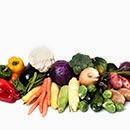1. fair & lovely
2. himalaya herbal fairness cream
3. clean and clear fairness cream
4. garnier skin natural's oil control cream
5. ponds white beauty
1. Fair & Lovely
Fair & lovely best cream for fainess.apply these cream on face two times in a day.fair and lovely most usable cream in india.its suitable for all skin types. its cream use in all season summer and winter.
2. Himalaya Herbal Fairness Cream
Himalaya fairness cream good choice for those who want no side effect and suitable for all skin types.himalaya fairness cream contain all herbal ingredients.Himalaya fairness cream used any time in a day and you feel your skin is soft in a second.
3. Clean & Clear Fairness Cream
Clean & Clear having a good brand value in market beacause its product is very effective and good for our body.Same clean and clear fairness cream good for our skin. clean & clear best for those people which having a oily skin type.clean and clear having vitamin c and vitamin b12 good combination.
4. Garnier skin Natural's oil control cream
Grnier skin natural's oil control cream having lemon substances.its good for all skin types.But garnier's made for oily skin type for controlling oil.If you want good
shining skin for 8 hours used this cream.Garnier skin natural made by loral's pvt ltd.
5. Ponds white beauty
Ponds White Beauty made for those women which having sensitive skin.Pond,s white beauty made for baby skin.White beauty cream used two times daily in morning and evening.
If you like my post please visit my real state website-www.delhiproperties.info
2. himalaya herbal fairness cream
3. clean and clear fairness cream
4. garnier skin natural's oil control cream
5. ponds white beauty
1. Fair & Lovely
Fair & lovely best cream for fainess.apply these cream on face two times in a day.fair and lovely most usable cream in india.its suitable for all skin types. its cream use in all season summer and winter.
2. Himalaya Herbal Fairness Cream
Himalaya fairness cream good choice for those who want no side effect and suitable for all skin types.himalaya fairness cream contain all herbal ingredients.Himalaya fairness cream used any time in a day and you feel your skin is soft in a second.
3. Clean & Clear Fairness Cream
Clean & Clear having a good brand value in market beacause its product is very effective and good for our body.Same clean and clear fairness cream good for our skin. clean & clear best for those people which having a oily skin type.clean and clear having vitamin c and vitamin b12 good combination.
4. Garnier skin Natural's oil control cream
Grnier skin natural's oil control cream having lemon substances.its good for all skin types.But garnier's made for oily skin type for controlling oil.If you want good
shining skin for 8 hours used this cream.Garnier skin natural made by loral's pvt ltd.
5. Ponds white beauty
Ponds White Beauty made for those women which having sensitive skin.Pond,s white beauty made for baby skin.White beauty cream used two times daily in morning and evening.
If you like my post please visit my real state website-www.delhiproperties.info








.jpg)




